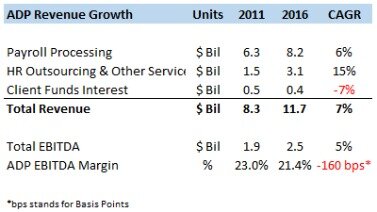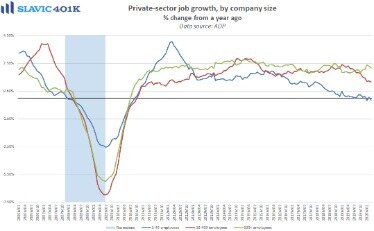
Equity is also known as shareholders’ fund, owner’s funds, or net worth. The retained earnings statement shows how much net profit has accumulated since inception or incorporation and has not been paid out as dividends. When a company issues shares, the proceeds go directly to the company.
- A PIPE is a private investment firm’s, a mutual fund’s, or another qualified investors’ purchase of stock in a company at a discount to the current market value (CMV) per share to raise capital.
- Dividends – Dividends are distributions of company profits to shareholders.
- Still, Burgess added that he’s “more negative” about the potential resurgence of bank M&A due to stock-price valuations, rising interest rates, the potential for a recession and regulatory approval of deals.
Partnership equity can increase by partner investments or contributions and revenues. Retained Earnings – Companies that make profits rarely distribute all of their profits to shareholders in the form of dividends. Most companies keep a significant share of their profits to reinvest and help run the company operations. These profits that are kept within the company are called retained earnings.
Other Forms of Equity
The Los Angeles-based PacWest reported that it had lost $5.7 billion of deposits during its first-quarter earnings in April. In May, the bank began a strategy to liquidate assets to shore up its balance sheet, starting with a $3.5 billion loan portfolio sale. And its stock has dropped from a high of $29.58 per share in mid-February to $7.69 at the time that its acquisition was announced on Tuesday.
In accounting, equity represents the owner’s contribution to the business in contra balancing the assets, liabilities, and net worth. It is not an amount owed to the owner but a different entity as it can be used to finance operations when there are insufficient assets to pay off all current obligations. For example, assume ABC Company purchases 25% of XYZ Corp for $200,000. At the end of year 1, XYZ Corp reports a net income of $50,000 and pays $10,000 in dividends to its shareholders. At the time of purchase, ABC Company records a debit in the amount of $200,000 to “Investment in XYZ Corp” (an asset account) and a credit in the same amount to cash. Equity, as we have seen, has various meanings but usually represents ownership in an asset or a company, such as stockholders owning equity in a company.

It is used when the investor holds significant influence over the investee but does not exercise full control over it, as in the relationship between a parent company and its subsidiary. If a business sells all of its assets and pays off all its debts (liabilities), the amount remaining is the owner’s share (equity) of the business. It is the residual interest in the company’s assets of an entity after deducting liabilities. Property equity is often used as proof of net worth, and property owners can use that equity to get a loan. The office has a current market value of $175,000, and the mortgage owed totals $100,000. A common option for sole traders is applying for a business equity loan to borrow money, using their current business assets as collateral.
What’s included in owner’s equity?
On the one hand, the investor takes a risk since the company doesn’t pay back the investment. Sole traders can also choose to turn their private businesses into limited companies. This is called ‘incorporation’, and means selling shares in your business to investors. These investors then become shareholders and own a part of your business. To understand how equity works in accounting, you need to know which assets count as equity. In simple terms, a company’s equity can include tangible assets (physical items) and intangible assets (items with value but no physical form).
Owner’s Distributions – Owner’s distributions or owner’s draw accounts show the amount of money the owner’s have taken out of the business. Distributions signify a reduction of company assets and company equity. In other words, upon liquidation after all the liabilities are paid off, the shareholders own the remaining assets. This is why equity is often referred to as net assets or assets minus liabilities.
How Is Equity Calculated?
Corporate equity does have one more component that partnership equity does not have. Corporations can buy back their shares from shareholders and issue treasury stock. This decreases owner’s equity because the company is actually taking away the shareholders’ ownership of the corporation. Treasury Stock – Sometimes corporations want to downsize or eliminate investors by purchasing company from shareholders.
Service-focused Phebian Davis-Culler earns the first clinical faculty … - Clemson News
Service-focused Phebian Davis-Culler earns the first clinical faculty ….
Posted: Wed, 02 Aug 2023 13:00:00 GMT [source]
The accounting equation still applies where stated equity on the balance sheet is what is left over when subtracting liabilities from assets, arriving at an estimate of book value. Privately held companies can then seek investors by selling off shares directly in private placements. These private equity investors can include institutions like pension funds, university endowments, insurance companies, or accredited individuals. A company’s shareholder equity balance does not determine the price at which investors can sell its stock. Other relevant factors include the prospects and risks of its business, its access to necessary credit, and the difficulty of locating a buyer.
What are the Other Possible Accounting Methods?
Investors usually seek out equity investments as it provides a greater opportunity to share in the profits and growth of a firm. In finance, equity is an ownership interest in property that may be offset by debts or other liabilities. Equity is measured for accounting purposes by subtracting equal employment opportunity policies and reports liabilities from the value of the assets owned. For example, if someone owns a car worth $24,000 and owes $10,000 on the loan used to buy the car, the difference of $14,000 is equity. Equity can apply to a single asset, such as a car or house, or to an entire business.
- The account may also be called shareholders/owners/stockholders equity or net worth.
- Think of retained earnings as savings since it represents a cumulative total of profits that have been saved and put aside or retained for future use.
- Home equity is roughly comparable to the value contained in homeownership.
- Interestingly, substantial or even majority ownership of an investee by another party does not necessarily prohibit the investor from also having significant influence with the investee.
Other comprehensive income is excluded from net income on the income statement because it consists of income that has not been realized yet. For example, unrealized gains or losses on securities that have not yet been sold are reflected in other comprehensive income. Once the securities are sold, then the realized gain/loss is moved into net income on the income statement. In the case of discounted cash flow, for example, an analyst forecasts future cash flows before discounting these back to present value. To come to any conclusions using a complicated method like this, analysts look at all aspects of the business. Many intricacies are involved with equity and many vital components that interact, so this article must have helped you better understand equity in accounting.
We provide you with equity method basics and expand on those basics with insights, examples and perspectives based on our years of experience in this area. To save time and automate accounting admin, thousands of entrepreneurs across the UK use the Countingup app. Charlene Rhinehart is a CPA , CFE, chair of an Illinois CPA Society committee, and has a degree in accounting and finance from DePaul University. It is not uncommon for a startup to go through several rounds of equity financing to expand and meet its goals.
MUFG Bank, Ltd. announces Consolidated Summary Report of Mitsubishi UFJ Financial Group, Inc. [under Japanese GAAP] for the three months ended June 30, 2023 - Yahoo Finance
MUFG Bank, Ltd. announces Consolidated Summary Report of Mitsubishi UFJ Financial Group, Inc. [under Japanese GAAP] for the three months ended June 30, 2023.
Posted: Tue, 01 Aug 2023 09:28:00 GMT [source]
Equity accounting methodology is used when the investor’s ownership stake in the investee is substantial, typically a minimum of 20 to 25 percent. The investor will exercise a high degree of influence over the investee’s business strategy and operating decisions with equity accounting. Owner’s equity is the right owners have to all of the assets that pertain to their business. This equity is calculated by subtracting any liabilities a business has from its assets, representing all of the money that would be returned to shareholders if the business’s assets were liquidated. Equity financing can be risky and rewarding for investors and business owners alike.
In determining the equity of some companies, especially big companies, the assets being evaluated may go beyond tangible assets, infrastructure, and machinery. The company’s reputation and brand identity are considered a form of equity in itself. Equity is commonly split among investors, founders, and sometimes the employees.

The total equity is followed by the sum of equity plus liabilities, so you can easily see that they balance with total assets. Equity in accounting is the remaining value of an owner’s interest in a company after subtracting all liabilities from total assets. Said another way, it’s the amount the owner or shareholders would get back if the business paid off all its debt and liquidated all its assets. The value of a company’s assets is the sum of each current and non-current asset on the balance sheet. The main asset accounts include cash, accounts receivable, inventory, prepaid expenses, fixed assets, property plant and equipment (PP&E), goodwill, intellectual property, and intangible assets.

